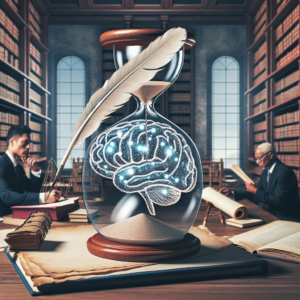Unveiling the Dark Side of Creativity: Shocking Copyright Infringement Cases

In an era where creativity fuels industries and drives innovation, the dark side of this vibrant landscape often goes unnoticed—copyright infringement. As artists, musicians, writers, and creators pour their hearts and souls into their work, the threat of unauthorized use looms large. This article delves into the complexities of copyright infringement, highlighting notable cases that have rocked the creative world, examining the repercussions for artists, and exploring the legal frameworks designed to protect intellectual property. Furthermore, we will discuss the role of technology in both facilitating and combating these violations, and propose preventative measures to safeguard creativity in our increasingly digital age.
Understanding Copyright Infringement: A Crucial Aspect of Creative Industries
Copyright infringement occurs when an individual or entity uses a copyrighted work without permission from the copyright holder. This legal concept is vital for protecting the rights of creators, ensuring they receive recognition and financial compensation for their work. In the creative industries, copyright serves as a safeguard against unauthorized reproduction, distribution, and public display of artistic works, including music, literature, visual arts, and software. The significance of copyright cannot be overstated; it not only incentivizes creativity by providing a legal framework for ownership but also fosters a culture of respect for intellectual property. As the digital landscape evolves, understanding the nuances of copyright infringement becomes increasingly crucial for both creators and consumers.
Notable Cases of Copyright Infringement That Shook the Creative World
Throughout history, several high-profile copyright infringement cases have captured public attention and sparked debates about artistic ownership. One of the most infamous cases involved the pop star Robin Thicke and his hit song “Blurred Lines,” which led to a landmark ruling in 2015. The jury found Thicke and his collaborators liable for infringing on Marvin Gaye’s “Got to Give It Up,” resulting in a staggering $7.4 million judgment. Another significant case involved the iconic rock band Led Zeppelin, whose song “Stairway to Heaven” was accused of borrowing from Spirit’s “Taurus.” The court ultimately ruled in favor of Led Zeppelin, but the case raised critical questions about the fine line between inspiration and infringement. These cases illustrate the ongoing tensions within the creative community regarding the boundaries of artistic expression and the legal protections afforded to creators.
The Impact of Copyright Violations on Artists and Their Work
The ramifications of copyright infringement extend far beyond financial losses; they can profoundly affect an artist’s reputation, creative process, and overall livelihood. When unauthorized use of their work occurs, artists may experience a sense of violation and frustration, as their intellectual property is exploited without consent. This not only undermines their ability to monetize their creations but can also stifle their motivation to produce new work. Additionally, the prevalence of copyright violations can create an environment of uncertainty, where artists may hesitate to share their work for fear of theft. The emotional and psychological toll of such violations can be significant, leading to a chilling effect on creativity and innovation within the artistic community.
Legal Consequences: How Courts Address Copyright Infringement Cases
The legal landscape surrounding copyright infringement is complex, with courts tasked with interpreting and enforcing copyright laws. When a copyright infringement case is brought before a court, several factors are considered, including the originality of the work, the extent of the infringement, and the intent of the alleged infringer. Courts may issue injunctions to prevent further use of the copyrighted material and award damages to the copyright holder. In some cases, statutory damages can be substantial, serving as a deterrent against future violations. However, the legal process can be lengthy and costly, often placing a significant burden on artists seeking justice. As a result, many creators may opt for settlements rather than pursuing litigation, which can further complicate the enforcement of copyright protections.
The Role of Technology in Facilitating Copyright Infringement
The rapid advancement of technology has transformed the way creative works are produced, distributed, and consumed. While digital platforms have democratized access to art and music, they have also made it easier for copyright infringement to occur. The rise of file-sharing websites, streaming services, and social media has blurred the lines of ownership, leading to widespread unauthorized use of creative content. Additionally, the anonymity afforded by the internet can embolden infringers, making it challenging for artists to track down and address violations. However, technology also offers tools for protection, such as digital rights management (DRM) systems and blockchain technology, which can help creators safeguard their work and assert their rights in the digital realm.
Preventative Measures: Protecting Creativity in a Digital Age
As the landscape of copyright infringement continues to evolve, it is essential for artists and creators to adopt proactive measures to protect their work. Educating oneself about copyright laws and the importance of registration can empower creators to assert their rights effectively. Utilizing watermarking, metadata, and licensing agreements can also help deter unauthorized use and establish clear ownership. Furthermore, fostering a culture of respect for intellectual property within the creative community is crucial. Collaboration between artists, legal experts, and technology developers can lead to innovative solutions that balance the need for access to creative works with the imperative to protect the rights of creators. By taking these steps, artists can navigate the complexities of the digital age while safeguarding their creativity.
The issue of copyright infringement remains a pressing concern in the creative industries, with significant implications for artists and their work. As we have explored, the legal landscape is fraught with challenges, and the role of technology is both a facilitator and a potential safeguard against violations. It is imperative for creators to remain vigilant and informed about their rights while advocating for a culture that respects intellectual property. By understanding the intricacies of copyright infringement and taking proactive measures, artists can continue to thrive in an environment that celebrates creativity while protecting their invaluable contributions to society.


















